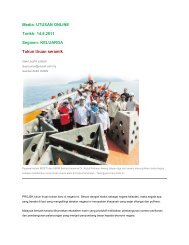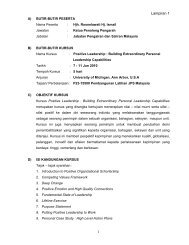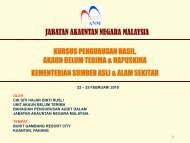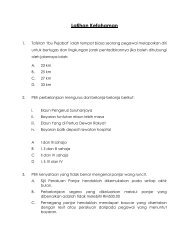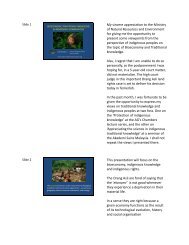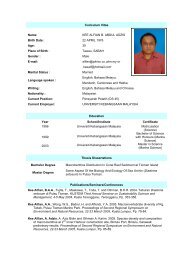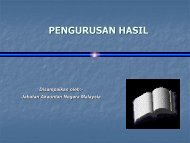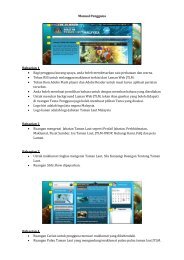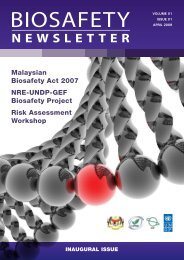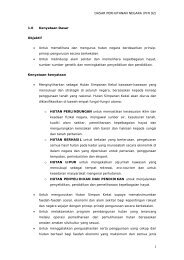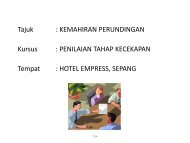Report - Jabatan Taman Laut Malaysia - NRE
Report - Jabatan Taman Laut Malaysia - NRE
Report - Jabatan Taman Laut Malaysia - NRE
Create successful ePaper yourself
Turn your PDF publications into a flip-book with our unique Google optimized e-Paper software.
3. FINDINGS AND CONCLUSIONS3.1. Project formulationContextConceptually the project is innovative in the context of <strong>Malaysia</strong>, as it seeksto address issues of improved marine park management through increasedcapacity and integration of key management agencies. It was developedbetween UNDP, GoM and NGOs over some years, through a series ofworkshops and meetings. Although the idea for the project was first mootedin 1999, 12 the project was approved in 2006 by the donors and the GoM forimplementation under the UNDP modality. The project started in March2007. Total budget is UNDP/ GEF USD 1,952,400.00 13 .EvaluationThree issues relevant to project formulation were identified as havingimplications for the project’s success: absence of an ecosystem healthstatus baseline, no direct engagement with transport providers (boatoperators and airlines) and their passengers, does not allow for theengagement of local scientists. The project indicators are not easy to use forproject monitoring.Absence of ecosystem health status baselineFor a project with the purpose of conserving marine biodiversity throughenhanced marine park management and inclusive sustainable islanddevelopment the absence of an ecosystem health status baseline is adesign weakness. Good marine park management includes such baselineinformation and monitoring as an essential management foundation. Tomanage resource effectively firstly they require measurement and thenmonitoring. Unless you measure something you don’t know if it is gettingbetter or worse. Managing for improvement requires measurement to seewhat is getting better and what isn’t improving.It is suggested that what is required is a baseline survey of all areas withinmarine park areas and also regular monitoring (every 3 month or 6 month)of coral cover and other indicator organisms of few selected areas within themarine park, from the best possible sites to the most degraded areas or theareas that are frequented by visitors and those that areas not - as controlsites.Coral cover monitoring can be conducted using Reef Check methods or anyother methods that is suitable such as those by ASEAN Australian, coralreef survey manual. The monitoring can be conducted by DMPM staff orwith partnership with and local university or other organisations, such asReef Check <strong>Malaysia</strong>. Engagement of local coral reef scientists is important12 Minutes of the NSC 14 Nov2007 P1013 As per TOR for Project MTR8



